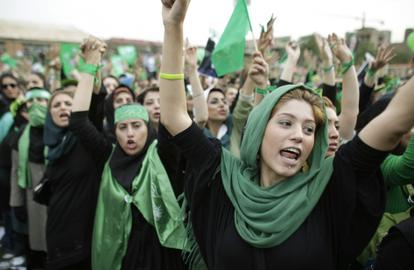
Erica Chenoweth is a leading authority on political violence and nonviolent resistance, and an associate professor at the Josef Korbel School of International Studies at the University of Denver. In 2013, Foreign Policy magazine named her among the world’s top global thinkers “for proving Gandhi right.” She is co-author, with Maria J. Stephan, of Why Civil Resistance Works: The Strategic Logic of Nonviolent Conflict and a recent Foreign Affairs article, Drop your Weapons: When and Why Civil Resistance Works. She spoke to IranWire about her research on nonviolence, and how it relates to Iran.
In your Foreign Affairs article, you mention Mohandas Gandhi’s Indian independence movement. One of George Orwell’s critiques of Gandhi’s belief in nonviolence was that Gandhi enjoyed the ability to command publicity, which wouldn’t be the case under all regimes. “It is difficult to see,” he wrote, “how Gandhi’s methods could be applied in a country where opponents of the regime disappear in the middle of the night and are never heard of again.” To what extent does regime type affect the likelihood of nonviolent methods gaining ground?
Surprisingly, we found no systematic differences between different regime types, as measured in terms of the POLITY IV score (an index identifying competition among political participants, and restrictions on executive power), state capacity (i.e. strength or weakness in military capacity), willingness to use violent repression, or world region.
Methods of nonviolent action have worked in some of the world's most brutal regimes — in Chile under Pinochet, South Africa under apartheid, Serbia under Milosevic, East Timor under Indonesian occupation, and elsewhere. Although some methods of repression are extremely brutal and may indeed reduce the overall effectiveness of nonviolent action, those same methods are equally likely to reduce the effectiveness of armed uprisings in such contexts.
You suggest that for the international community, a “responsibility to assist” nonviolent activists might provide an alternative to the current “responsibility to protect” civilians under threat. Might not such assistance provide authoritarian regimes an excuse to crack down on the grounds that they face foreign subversion, as the Obama administration feared it would during Iran’s 2009 Green Movement protests?
Sure it does. But even when movements have no support from outside, regimes almost always accuse them of being agents of foreign subversion anyway. One way to look at it, therefore, is what one of my colleagues, a former diplomat, often says: "If you're going to do the time, you might as well do the crime."
Regardless, if states are worried about delegitimizing the local roots of an uprising (a valid concern), there are many other international groups and organizations who may be well suited to assisting nonviolent activists. For example, there are much more active roles to be played by NGOs that provide legal assistance to human rights workers, serve as "unarmed bodyguards" to activists, provide tech skills training, and host capacity-building workshops.
There are important roles for alternative media outlets that can counter state media narratives. And states can certainly step in to prevent their allies from cracking down on unarmed activists, while states and inter-governmental organizations can sanction states that fail to respect basic rights of peaceful protest and physical integrity.
As you point out in the article, Iran’s revolutionaries of 1979 achieved the Shah’s overthrow largely through nonviolent methods, and indeed, Ruhollah Khomeini himself advocated such methods. But this didn’t stop the Khomeinists from instituting a brutal legal code and using alarming levels of violence to maintain control once they took power. What significance might the example of the Islamic Republic hold for the “responsibility to assist”?
Certainly this case suggests that the "responsibility to assist" would have to endure long after transitions take place. Jorgen Johansen, a Swedish scholar, argues that post-transition assistance is the most important kind, because it can be decisive in determining what kind of state emerges afterward. Of course, in 1979 the United States was not in a position to provide assistance to the post-Shah Iranian state. But many other powerful states were in a position to make an impact yet did little to ensure that the transitional government would be a representative and rights-respecting one.
You write that nonviolent resistance movements succeed because they are more likely to enjoy mass participation, produce regime defections, and employ flexible tactics. The Green Movement in Iran in 2009 was almost entirely non-violent, and yet critics said it appealed mainly to Iran’s middle class, it produced few defections (least of all from within the security establishment), and despite having millions of supporters, it seemed to run out of tactics. Why didn’t the Green Movement succeed?
I agree with your framing in the question. Whereas the 100 Days' Revolution featured broad-based support from urban leftists, rural peasants, Marxist intellectuals, Islamists, oil workers, merchants, laborers, and bazaaris alike, the Green Movement remained a largely urban, progressive, intellectual and student movement. Typically when nonviolent movements do not expand to include both urban and rural support, middle class and working poor, and diverse political groupings, they do not create sufficient leverage to bring about defections within the opponent government.
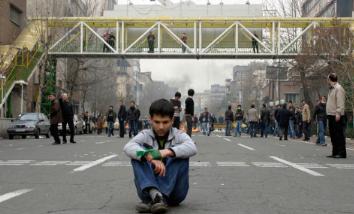
You mention Russia’s military involvement in Ukraine following the ouster of Viktor Yanukovych, and Russian and Iranian support for the Syrian government from 2011. To what extent does a nation’s neighborhood and political alignments (i.e. being closer geographically and politically to Russia than to the West in both of these cases) determine the level of violent retaliation with which its government might confront a peaceful movement?
We found that foreign alliances with powerful states had no significant impact on whether nonviolent campaigns succeeded or failed. However, the removal of support by a foreign sponsor at a critical moment in the campaign (e.g. Ronald Reagan's phone call to Ferdinand Marcos telling him that the U.S. could no longer stand by his rule in the Philippines) is associated with a higher chance of campaign success. To make it more concrete, imagine whether Russia or Iran had withdrawn their support from Bashar al-Assad in Syria in the uprising's first months. It might have been a totally different situation in Syria today.
To what extent did geography and political alignments determine the fate of the Green Movement in Iran?
I'm increasingly convinced that domestic geography is very important—that a movement's ability to involve both urban and rural people is crucial to its success. In terms of Iran's regional neighborhood, when we compared world regions in our historical data, we found that nonviolent resistance has still been more effective than violent resistance throughout the Middle East. This doesn't mean that nonviolent resistance always works. It just means that it has had a better track record than violent resistance. In terms of political alignments, it is clear that there are fewer and fewer authoritarian regimes in the world, and those that remain are stubborn indeed.
Iran provides an example of an authoritarian regime that is very clued in to methods of nonviolent resistance, since its leaders have specifically and repeatedly raised the alarm about Eastern European-style “velvet revolution,” and have evidently heard of Gene Sharp, too. To what extent does it matter whether governments are aware of the opposition’s methods?
Since the "Color Revolutions" of the mid-2000s, Russia, Iran, China, Belarus, and others have been increasingly paranoid about the possibility of facing "soft coups" against their authoritarian rule. Apparently there are regular conversations among these powers about how best to repress nonviolent dissidents in their countries, and this means that they have become more savvy in their methods of repression. Instead of firing live ammunition into crowds of unarmed demonstrators, for example, they are more likely to counter-mobilize their own supporters and to delegate harassment, intimidation, and other repressive methods to plain-clothes or secret police.
It certainly matters that governments are aware of the opposition's methods, in that they may be able to subvert or undermine particular tactics (like protests, which may become riskier). But that doesn't preclude the effectiveness of civil resistance as a method of conflict per se. It just means that activists have to get creative, share knowledge and skills, and innovative new nonviolent tactics that can circumvent these new repressive techniques.
visit the accountability section
In this section of Iran Wire, you can contact the officials and launch your campaign for various problems




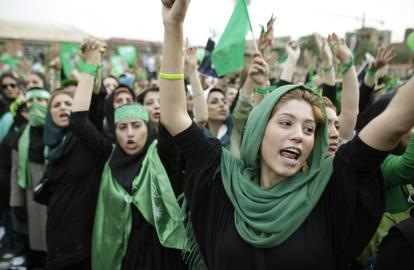










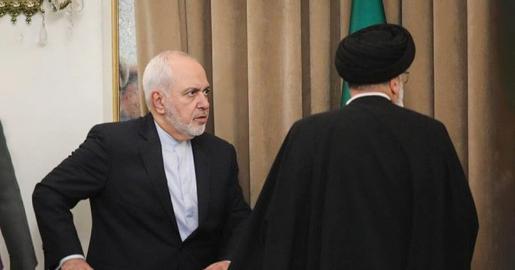
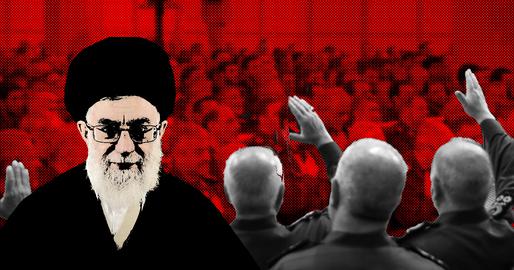








comments